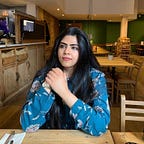FMP/ Migrant Integration — 10. Designing the Ritual of Exchanging Drinks
In the last blog, it was discussed how the opportunity of exchanging traditional drinks with neighbours could favour the development of cultural sensitisation and social cohesion. In order to do that, the activity ought to be orchestrated according to a script that could give rise to shared expectation for mitigating any anxiety or uncertainty present in meeting with a stranger. A ritual for the neighbourhood therefore provides conditions for controlled performance of the activity to take place.
To learn more about the mechanics of designing rituals, I began looking up the available literature and got hold of a valuable framework laid out by the Interaction Foundry based at the Imperial College of London. The ‘Ritual Design Toolkit’ dictates that the whole process is disintegrated into three stages. It starts by scoping which involves deciding the key moment that triggers the ritual, followed by predicting the ritual behaviour, and concludes by defining the outcome.
A ritual consists of the following elements working side-by-side to each other :
- Storyboard → helps to clarify a narrative arc and purpose for the ritual.
- Script and prompts → give participants a roadmap of the designed plan packed with deliberate actions. However, there is always some degree of improvisation to be added from the participants’ end.
- Memorabilia → using props helps to testify collective memory of shared time and space.
A crucial lesson mentioned in the toolkit helped me to identify that ritual behaviours enabled through design needed a right amount of balance between sequencing actions and in allowing them to happen simply.
Storyboarding the Ritual
Next, referring to the Ritual Design Canvas suggested in the toolkit, I created a storyboard consisting of two parts: the Context Cluster and the Ritual Cluster. In the context cluster, details about logistics of arrangement of the event were recorded. In the ritual cluster, steps of the specific ritual to be performed during the event are described.
Part A — The Context Cluster
1a. A resident stumbles across a poster pinned in communal space of a building. It communicates participation towards the ritual of exchanging drinks and important information related to it written in multiple languages.
2a. On a fixed day of the week, responses are collected in a drop-box from people who would like to take part in the event. It serves the crucial function of also gathering allergen information to be considered in preparation of drinks.
3a. Pairs are matched based on an algorithm aimed at mixing people from different cultural backgrounds. Invitations are sent through mail to communicate the schedule to both the partners fixed against each other. They also receive the allergen information about their partners.
Part B — The Ritual Cluster
4b. The stage is set-up on the day of the event. In the centre is placed a cupholder which acts as a prop, helping in crystallisation of a set of beliefs construction of meaning during the ritual.
5b. The two people come together over a session of consumption of traditional drinks, exchanged with each other.
6b. To testify their presence at the ritual, memorabilia is created to represent shared memory of time and space. Here, notes are hung on a tree, or cups with stains can be left aside arranged in a certain pattern. This step is left loosely sequenced, allowing it to be determined by the outcome of the experience.
Bibliography
Ozenc, F.K. and Hagan, M. (2018) ‘Ritual Design: Crafting Team Rituals for Meaningful Organizational Change’, in Chung, W. and Shin, C.S. (eds) Advances in Affective and Pleasurable Design. Cham: Springer International Publishing, pp. 146–157.
‘Ritual Design Toolkit’ (no date). INTERACTION FOUNDRY Imperial College London. Available at: https://interactionfoundry.com/rdt (Accessed: 21 November 2021).
